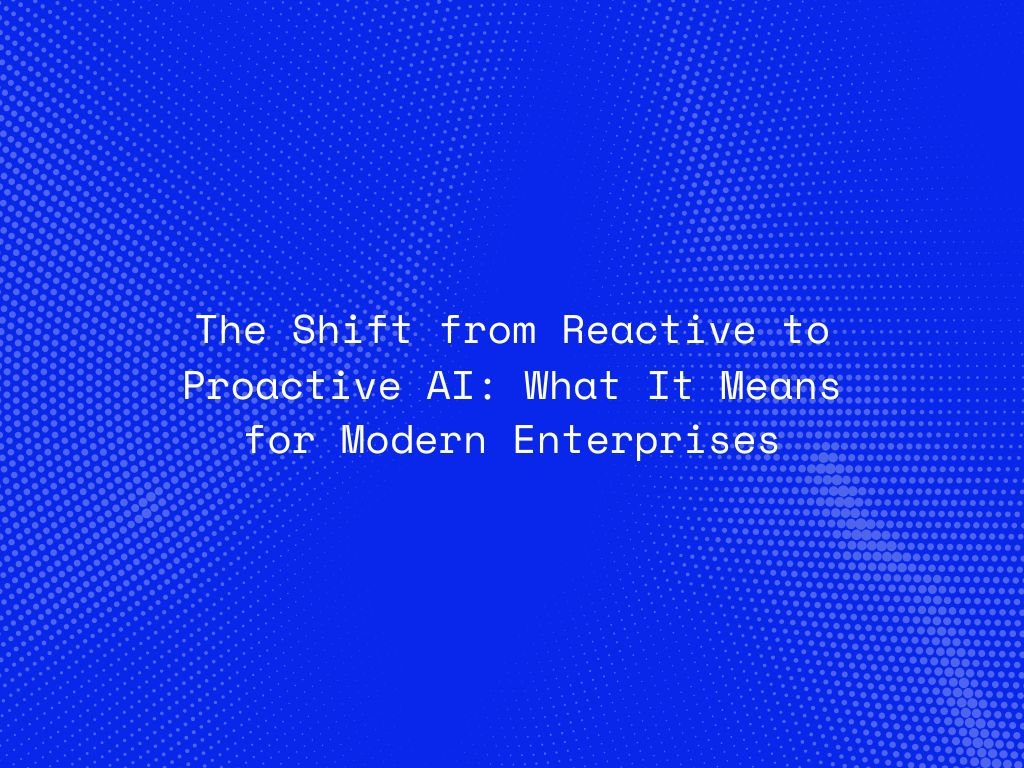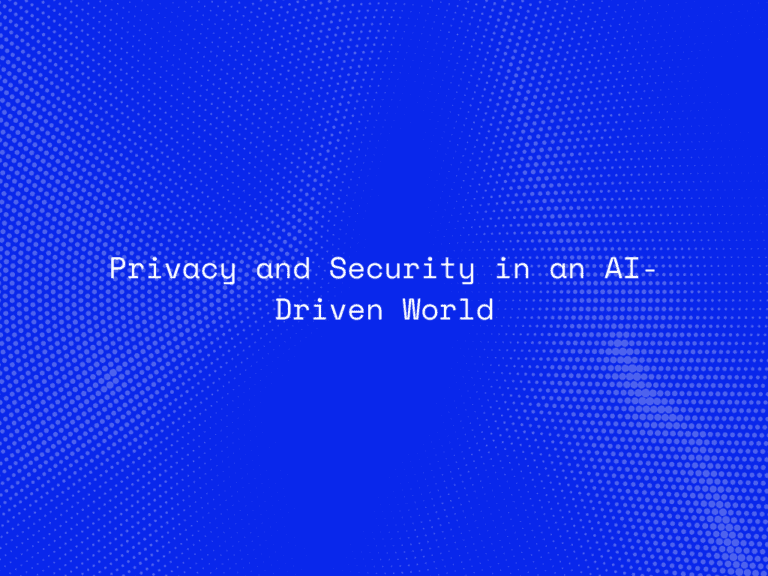Artificial Intelligence (AI) is no longer just a futuristic concept—it’s a critical driver of enterprise innovation. Until recently, most AI systems were reactive: they analyzed past events and offered insights after problems occurred. But with advancements in real-time data processing, machine learning, and predictive analytics, we are entering the era of proactive AI.
This shift is more than technical—it represents a complete reimagining of how businesses anticipate challenges, make decisions, and create value.
Reactive vs. Proactive AI: Understanding the Difference
| Aspect | Reactive AI | Proactive AI |
|---|---|---|
| Focus | Responds to past events | Anticipates and acts on future events |
| Data Handling | Uses historical data | Uses real-time and predictive data |
| Use Cases | Reporting, diagnostics, after-the-fact analysis | Forecasting, automation, risk prevention |
| Business Value | Improves understanding of what has happened | Drives action based on what will or could happen |
Reactive AI is passive—waiting for events to occur before responding. Proactive AI is active—predicting outcomes, recommending actions, and sometimes acting autonomously.
Why the Shift Matters Now
The shift to proactive AI is timely—and necessary. Modern enterprises operate in increasingly volatile, uncertain, complex, and ambiguous (VUCA) environments. Relying solely on historical data to make decisions isn’t enough. Businesses must:
-
Anticipate supply chain disruptions
-
Prevent equipment failure before it happens
-
Identify cybersecurity threats in real-time
-
Predict customer churn and intervene proactively
Proactive AI is how enterprises stay ahead instead of catching up.
Technologies Enabling Proactive AI
1. Real-Time Data Processing
Platforms like Apache Kafka, Flink, and Spark enable continuous ingestion and processing of streaming data.
2. Predictive Analytics & ML Models
Supervised and unsupervised machine learning algorithms forecast outcomes and detect anomalies before they become issues.
3. Edge Computing
AI at the edge allows data to be processed close to its source—ideal for use cases in IoT, manufacturing, and healthcare.
4. Reinforcement Learning
RL enables systems to learn optimal behaviors dynamically, ideal for autonomous agents and robotics.
5. Digital Twins
These virtual models simulate real-world processes, helping predict failure, optimize performance, and reduce downtime.
6. Generative AI & LLMs
Large language models can anticipate user needs, generate responses, and guide decisions before the user even asks.
Business Applications of Proactive AI
Manufacturing
-
Predictive maintenance reduces unplanned downtime
-
Optimized production based on real-time demand signals
Retail
-
Dynamic pricing based on market conditions
-
Personalized offers triggered by customer behavior in real time
Finance
-
Fraud detection using behavioral analysis
-
Risk scoring and mitigation before transactions are approved
Supply Chain
-
Route optimization using traffic and weather data
-
Anticipate inventory shortages and reorder automatically
Healthcare
-
Early disease detection from patient monitoring systems
-
Proactive care recommendations to reduce readmissions

Benefits for Enterprises
- Faster, smarter decision-making
- Higher operational efficiency
- Reduced risk and downtime
- Stronger customer satisfaction
- Improved business agility
Challenges in Adoption
Despite the advantages, proactive AI adoption presents hurdles:
-
Data Silos & Quality Issues: Clean, unified, real-time data is a prerequisite.
-
Cost & Infrastructure: Real-time systems demand high compute power and integration.
-
Cultural Shift: Teams must learn to trust AI-driven predictions and act upon them.
-
Ethical Concerns: Acting on AI-generated insights must be fair, transparent, and accountable.
Future Outlook
Proactive AI is not just a trend—it’s a strategic necessity. As AI becomes more autonomous and intuitive, enterprises that embrace proactive intelligence will innovate faster, serve customers better, and navigate uncertainty with confidence.
Final Thoughts
The journey from reactive to proactive AI marks a profound evolution in enterprise intelligence. It’s not just about being faster—it’s about being smarter, anticipatory, and resilient. Forward-thinking organizations are already investing in infrastructure, talent, and governance to make proactive AI central to their strategy.
The question is no longer if your enterprise should make the shift—but how quickly you can get there.




